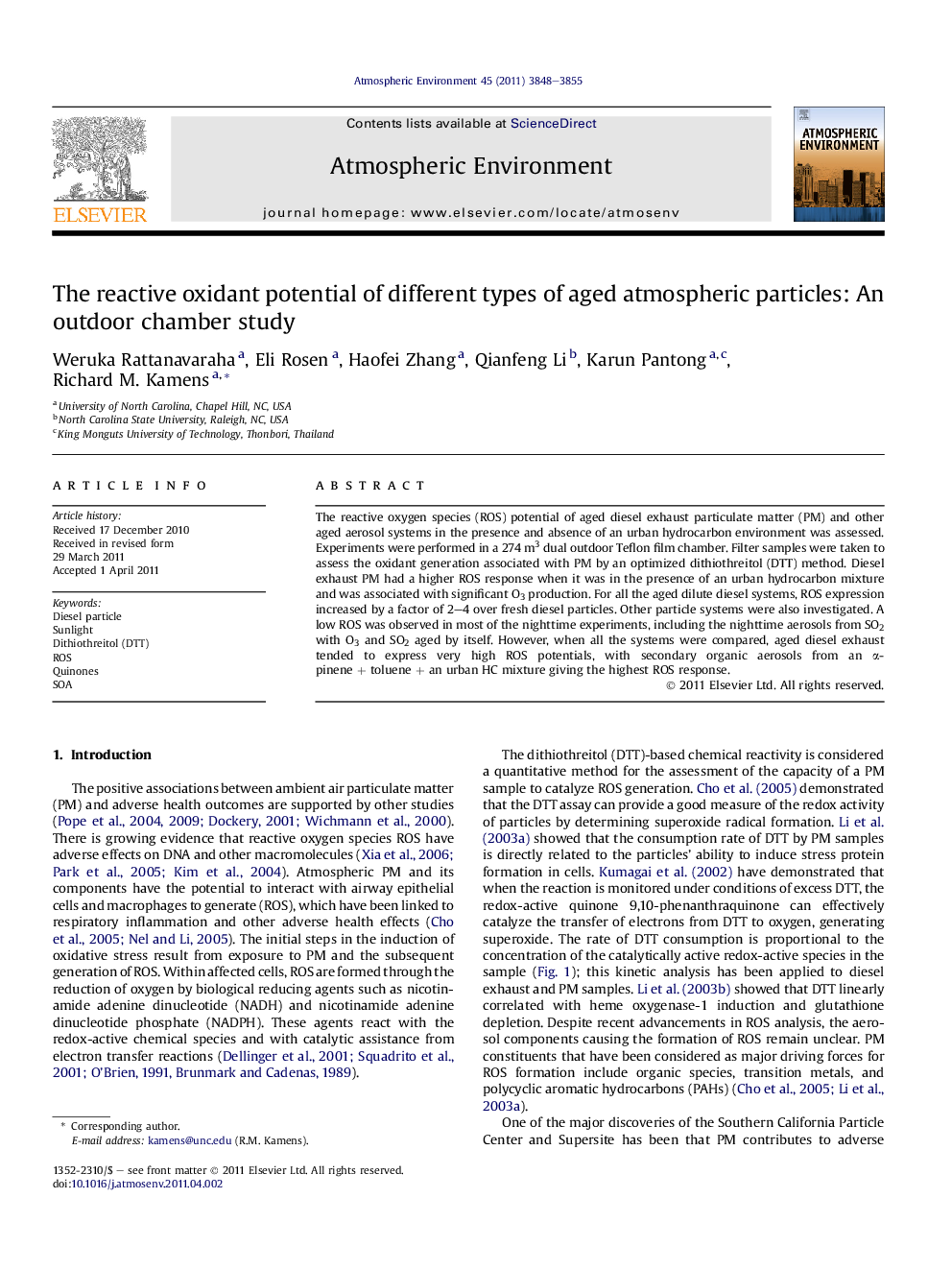| Article ID | Journal | Published Year | Pages | File Type |
|---|---|---|---|---|
| 4439694 | Atmospheric Environment | 2011 | 8 Pages |
The reactive oxygen species (ROS) potential of aged diesel exhaust particulate matter (PM) and other aged aerosol systems in the presence and absence of an urban hydrocarbon environment was assessed. Experiments were performed in a 274 m3 dual outdoor Teflon film chamber. Filter samples were taken to assess the oxidant generation associated with PM by an optimized dithiothreitol (DTT) method. Diesel exhaust PM had a higher ROS response when it was in the presence of an urban hydrocarbon mixture and was associated with significant O3 production. For all the aged dilute diesel systems, ROS expression increased by a factor of 2–4 over fresh diesel particles. Other particle systems were also investigated. A low ROS was observed in most of the nighttime experiments, including the nighttime aerosols from SO2 with O3 and SO2 aged by itself. However, when all the systems were compared, aged diesel exhaust tended to express very high ROS potentials, with secondary organic aerosols from an α-pinene + toluene + an urban HC mixture giving the highest ROS response.
► ROS from diesel particles increased by a factor of 2–4 as they aged in sunlight. ► Increases in Diesel ROS were associated with PAH decay and increases in SOA. ► ROS from toluene and α-pinene SOA formation were among the highest observed.
